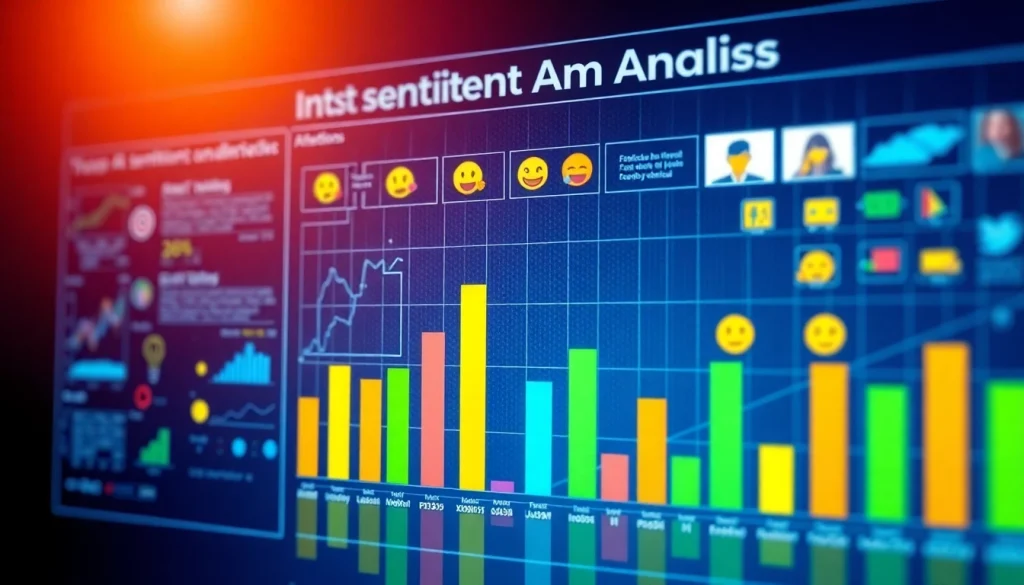What is AI Sentiment Analysis?
Definition and Overview
AI sentiment analysis refers to the computational technique used to detect and interpret emotions from textual data. At its core, it applies algorithms and models to understand whether the text conveys a positive, negative, or neutral sentiment. Powered by advanced technologies in natural language processing (NLP) and machine learning, AI sentiment analysis is widely adopted across various industries to glean insights from large volumes of text, enabling businesses to make informed decisions based on consumer feedback, social media posts, and other forms of communication.
Importance in Modern Technology
As businesses increasingly transition to digital platforms, the volume of textual data generated—social media interactions, customer reviews, and online feedback—has skyrocketed. AI sentiment analysis plays a crucial role by providing the necessary tools to analyze this data effectively. By understanding public sentiment, organizations can shape their marketing strategies, enhance customer service, and even forecast market trends. For instance, businesses can rapidly respond to customer needs and adjust their offerings based on real-time feedback. Moreover, using AI sentiment analysis can stimulate more personalized customer interactions, ultimately fostering loyalty and satisfaction.
How It Works: The Basics
The process of AI sentiment analysis involves several stages. It typically begins with the data collection phase, where textual data is harvested from various sources. Following data collection, preprocessing techniques are applied to clean the data—removing noise, correcting misspellings, and converting all text into a consistent format. Next comes the sentiment classification phase. Here, machine learning models, often trained on labeled datasets, analyze the processed text to determine its sentiment. Finally, the results are aggregated and analyzed to extract actionable insights.
Key Techniques in AI Sentiment Analysis
Natural Language Processing (NLP)
NLP is a quintessential technology in AI sentiment analysis. It entails a range of computational techniques that help machines understand, interpret, and generate human language. Techniques such as tokenization (breaking text into manageable pieces), stemming (reducing words to their base form), and named entity recognition (identifying and categorizing key information) aid in effectively processing language. NLP not only allows for the identification of sentiment through word choice but also provides context by analyzing the relationships between words, which is essential for understanding sarcasm, humor, or nuanced emotional tones.
Machine Learning Algorithms
Machine learning algorithms are core contributors to enhancing the precision of sentiment analysis. Commonly used models include Support Vector Machines (SVM), Naive Bayes, and deep learning architectures like Recurrent Neural Networks (RNNs) and Transformers. Each algorithm has its strengths: for instance, while Naive Bayes is effective for simpler tasks, deep learning models excel in processing large datasets and understanding complex relationships within the data. Training these models on vast amounts of text data enhances their ability to recognize subtleties in human emotions and sentiments.
Text Analysis and Emotion Detection
Text analysis combines various methodologies to interpret written content. This includes sentiment polarity (whether the sentiment is positive, negative, or neutral) and more granular emotion detection. Advanced models, often leveraging pre-trained language models (like BERT or GPT), can classify sentiments into multiple categories, such as joy, anger, sadness, or surprise. This capability allows organizations to capture a spectrum of consumer emotions, enriching insights gleaned from customer interactions.
Popular Tools for AI Sentiment Analysis
Commercial Solutions
Several commercial platforms offer robust AI sentiment analysis tools. Services such as IBM Watson, Azure Cognitive Services, and Google Cloud Natural Language API feature pre-trained models capable of analyzing text at scale. These tools often come equipped with user-friendly interfaces that allow businesses to integrate sentiment analysis into their existing systems easily. For instance, marketers can utilize these platforms to analyze consumer sentiments concerning campaigns in real-time, allowing for agile responses to market shifts.
Open-source Alternatives
Open-source tools like NLTK, TextBlob, and VADER provide accessible options for companies and developers looking to implement sentiment analysis without significant investment. These tools allow users to build and customize their sentiment analysis pipelines using Python programming language. Additionally, libraries such as Hugging Face’s Transformers enable users to tap into state-of-the-art pre-trained models for various NLP tasks, including sentiment classification.
Integrating APIs for Enhanced Functionality
APIs for sentiment analysis, such as those offered by Zendesk or RapidAPI, allow developers to incorporate sentiment analysis effortlessly into their applications. These integrations can provide real-time insights into customer feedback directly within CRM systems or apps, giving businesses the ability to act quickly. By pulling in data from various platforms, companies can gain a cohesive view of customer sentiment across different channels, refining their strategy accordingly.
Applications of AI Sentiment Analysis
Business Insights and Decision Making
AI sentiment analysis can significantly influence business strategies by providing insights into customer opinions and behaviors. Companies can analyze product reviews to identify strengths and weaknesses in offerings or scrutinize social media interactions to gauge brand perception. By aligning sentiment data with sales and marketing efforts, businesses can make better-informed decisions and improve overall performance. For example, a negative trend in customer sentiment regarding a new product launch may prompt a company to revisit marketing strategies or even make adjustments to the product itself.
Social Media Monitoring
Social media is a goldmine for sentiment analysis, offering a plethora of unstructured data ripe for analysis. Businesses can monitor social media mentions to track public perception in real time. Tools that analyze sentiments from tweets, posts, and comments provide critical data on customer likes and dislikes. Ultimately, leveraging sentiment analysis helps brands foster stronger community engagement, manage their reputation effectively, and respond to potential PR crises before they escalate.
Customer Feedback Analysis
Customer feedback, whether as simple suggestions or formal surveys, is another area where AI sentiment analysis shines. By filtering through qualitative feedback to assess customer happiness, businesses can optimize their services. For example, analyzing sentiment from customer support chats can highlight areas needing improvement and lead to enhanced training for support teams. The sophistication of sentiment analysis also allows for segmentation of feedback, enabling targeted improvements based on specific customer demographics or behavior.
Challenges and Future of AI Sentiment Analysis
Data Privacy and Ethical Considerations
As with any technology relying on data, AI sentiment analysis faces challenges related to data privacy and ethics. The collection and processing of consumer data must comply with regulations such as GDPR and CCPA. Businesses should prioritize transparency, notifying users about data use while ensuring robust data protection measures are in place. Ethical concerns also arise surrounding bias in sentiment analysis technologies. Continuous training and testing of algorithms are essential to mitigate such biases and to ensure fair and equitable analysis across diverse user bases.
Improving Accuracy and Understanding Context
One of the significant challenges in AI sentiment analysis is accurately capturing context. Sentiments can shift based on cultural nuances, sarcasm, or context-specific references. To enhance accuracy, AI systems must be continually refined and trained on diverse datasets reflecting a broad spectrum of language nuances. Development in multilingual sentiment analysis is also crucial, as it addresses the need for accurate sentiment evaluation across different languages and dialects.
Emerging Trends and Technologies
The future of AI sentiment analysis is exciting, with several emerging trends shaping its trajectory. The integration of generative AI and machine learning techniques promises higher accuracy and better context interpretation. Furthermore, organizations are beginning to leverage multi-modal approaches—analyzing text, audio, and video data together to achieve a more holistic understanding of sentiment. As technology evolves, sentiment analysis will likely expand to accommodate real-time feedback and enhanced predictive capabilities, helping organizations stay ahead of market dynamics.


